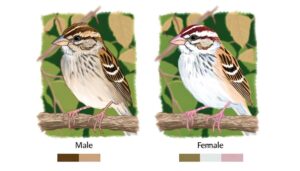Did China Wipe Out the Common Sparrow: A Historical Guide
Yes, China did attempt to eradicate the common sparrow during the late 1950s as part of Chairman Mao Zedong's Four Pests Campaign. They targeted sparrows due to their consumption of grain, an essential resource.
However, the campaign didn't fully eradicate the species but drastically disrupted the ecosystem balance. Increased crop pests, and a subsequent famine, underscored the sparrow's pivotal role in natural pest control.
Today, sparrows have rebounded in some rural areas, yet their decreased population in urban areas highlights lasting impact. There's more to uncover when appreciating the profound ecological effects of this historical campaign.

Key Takeaways
- China launched the Four Pests Campaign under Chairman Mao Zedong, targeting common sparrows for eradication.
- Sparrows were heavily exterminated, disrupting the ecosystem and increasing crop-damaging pests, leading to agricultural issues.
- The mass eradication led to an unanticipated locust plague, highlighting the sparrows' role as natural pest controllers.
- The public sentiment shifted due to the ecological and emotional consequences of the campaign, causing a heightened environmental awareness.
- Post-campaign, sparrow populations have been recovering, with higher numbers in rural areas, and their decline had global ecological repercussions.
The Great Leap Forward
In the late 1950s, during the Great Leap Forward, China's campaign to rapidly industrialize its economy, the country declared a war on the common sparrow. This war wasn't fought with weapons or soldiers, but with the collective efforts of its civilian population.
The common sparrow, seen as a pest, was targeted due to its propensity to consume grains, a key food source. The government believed that by eliminating these birds, they could increase agricultural production and expedite economic growth. Citizens were encouraged to eradicate sparrows, using methods as varied as banging pots and pans to disrupt the birds' sleep, to shooting or poisoning them.
This mass extermination led to a drastic reduction in the sparrow population, leading to unforeseen ecological repercussions.
Understanding the 'Four Pests Campaign'
The war on sparrows was part of a broader initiative known as the 'Four Pests Campaign', launched by the Chinese government to boost agricultural production.
Initiated in 1958, the campaign targeted rats, flies, mosquitoes, and sparrows, perceived as threats to public health and agricultural yield. The government mobilized citizens in a nationwide effort to exterminate these creatures.
The scientific rationale was simple: by reducing the population of these pests, crop yields would increase, supporting the country's ambitious economic goals. However, the campaign's approach didn't consider the ecological balance and potential unforeseen consequences.
It was a classic example of a manmade disturbance to an ecosystem, with results that were far-reaching and, in some cases, devastating. Detailed analysis of the campaign offers valuable insights into the complex dynamics of ecosystems.
Sparrows: An Unexpected Enemy
In China's history, sparrows weren't always seen as a gentle, harmless avian species. Initiated in the 1950s, China's Sparrow Campaign aimed to eradicate these birds, blamed for consuming grain and contributing to famine.
This aggressive campaign led to significant ecological impacts, necessitating an in-depth assessment of the resultant changes in the environment.
Chinas Sparrow Campaign
Dubbed the 'Sparrow Campaign,' China's late 1950s attempt to eradicate these birds, seen as agricultural pests, led to unforeseen ecological consequences. Initiated by Chairman Mao Zedong, the campaign's primary goal was to protect the nation's grain supply from the sparrows who were consuming it in large quantities.
The campaign incorporated multiple strategies including:
- Mobilizing millions of citizens to drive sparrows from their roosts by creating continuous noise.
- Killing adult birds directly.
- Destroying their nests to prevent reproduction.
- Using various traps and poisons.
Despite its initial success, the 'Sparrow Campaign' didn't foresee the ecological balance that sparrows maintained. Their absence led to an explosion in insect populations, specifically locusts, with catastrophic implications for China's agriculture.
Ecological Impact Assessment
While the Sparrow Campaign initially seemed successful, a closer look at its ecological impact paints a starkly different picture. It revealed how the removal of sparrows upset the natural balance and triggered severe ecological repercussions.
Sparrows, although seemingly insignificant, played a significant role in controlling insect populations, particularly locusts. Their absence led to an explosion of these pests, causing widespread crop damage and contributing to the Great Chinese Famine.
This stark example of a trophic cascade, where the elimination of a key species disrupts an entire ecosystem, highlights the intricate interconnectedness of nature. It underscores the necessity for careful ecological impact assessments before undertaking large-scale interventions like the Sparrow Campaign, given the potential for unanticipated and devastating consequences.
Effects on China's Ecosystem
The common sparrow, though small, played a significant role in China's ecosystem, contributing to the control of pests and the pollination of plants.
The sharp decline in their population has disrupted this fragile balance, leading to an unchecked increase in pests and a decrease in plant diversity.
Efforts to restore the ecosystem are now underway, with a primary focus on reintroducing the sparrow and managing pest populations.
Sparrow's Role in Ecosystem
Playing an important part in China's ecosystem, sparrows have a sweeping impact on the balance of insect populations and the health of crops. These small birds fulfill several crucial ecological functions:
- Insect Control: Sparrows consume a vast number of insects, acting as a natural pest control mechanism. They play a critical role in maintaining the balance of insect populations, reducing crop damage.
- Seed Dispersal: Sparrows contribute to seed dispersal, aiding in vegetation growth and diversity.
- Food Source: They're an important part of the food chain, providing sustenance for larger predators.
- Indicator Species: Sparrows, being sensitive to environmental changes, act as indicator species, their population trends reflecting the health of the ecosystem.
Hence, sparrows' role in the ecosystem is fundamental, their decline potentially heralding serious environmental consequences.
Impact of Sparrow Decline
As sparrow numbers plummeted, China's ecosystem took an unexpected hit, with repercussions rippling through the balance of insect populations, crop health, and overall biodiversity. The absence of sparrows, known insectivores, led to an explosion of pest insects, notably locusts. The unchecked locust population decimated crops, causing economic loss and food security issues. The ripple effect further disrupted the ecosystem's balance as other species also suffered from the sudden change.
Here's a detailed breakdown:
| Impact | Direct Effect | Indirect Effect |
|---|---|---|
| Insect Population | Increase in pests | Loss of natural control |
| Crop Health | Increased damage | Economic and food security issues |
| Biodiversity | Decreased sparrow population | Disruption in ecosystem balance |
In essence, the decline of sparrows had a cascading effect on the ecosystem, illustrating the delicate interconnectedness of nature.
Ecosystem Recovery Efforts
Recognizing the severe consequences of the sparrow population's decline, concerted recovery efforts were launched to restore China's ravaged ecosystem. Chinese authorities and environmentalists initiated inclusive measures aimed at restoring the balance in the ecosystem.
Artificial Nesting: Nesting boxes were installed in urban and rural areas to encourage sparrow habitation and breeding.
Pest Management: Natural predators of pests, usually controlled by sparrows, were introduced into the ecosystem.
Public Awareness: Public education campaigns were conducted to raise awareness about the importance of sparrows in the ecosystem.
Legal Protection: Laws were enacted to protect sparrows and their habitats, and harsh penalties were imposed on violators.
These steps, while not completely eradicating the damage, have made significant strides in rehabilitating China's ecosystem.
The Role of Sparrows in Agriculture
Roaming through the extensive fields of crops, sparrows greatly contribute to the health of agriculture by managing the population of insects and pests. They're natural predators, picking off pests that can damage crops, such as beetles, caterpillars, and aphids.
This ecological service not only protects the crop yield but also reduces the farmer's dependency on chemical pesticides. With their keen sight and agile flight, sparrows efficiently keep the pest population in check.
Their diet isn't limited to insects; they also feed on weed seeds, helping to keep unwanted flora under control. Consequently, despite their small size, sparrows play a major role in fostering a balanced agricultural environment.
Their absence could have serious implications for crop health and productivity.
Public Response to Sparrow Eradication
The Chinese public's response to sparrow eradication was varied and complex. Many citizens initially supported the campaign, believing it to be a necessary step towards agricultural preservation.
However, as the ecological implications became apparent, public sentiment shifted, leading to widespread emotional distress and a change in perception about the role of humans in nature.
Community Reaction to Eradication
In response to the sparrow eradication, a significant portion of the Chinese community displayed mixed emotions, ranging from support for the government's initiative to concerns about ecological balance. This reaction was multifaceted, with various elements at play:
- Government Support: Many supported the initiative, believing in the government's assertion that sparrows were detrimental to agricultural production.
- Ecological Concerns: A subset of the population expressed worry about potential negative impacts on the ecosystem.
- Cultural Significance: The sparrow, seen as a symbol of luck in Chinese culture, was missed by some, adding a poignant cultural layer to the reaction.
- Scientific Skepticism: Some skeptics questioned the scientific validity of the sparrow eradication campaign, highlighting a need for evidence-based policy.
These reactions represent the complexity of public sentiment towards this controversial initiative.
Impacts on Public Perception
As the sparrow population dwindled, public perception shifted drastically, with many Chinese citizens beginning to question the long-term ecological consequences of such a dramatic eradication.
The disappearance of the once ubiquitous bird challenged the belief in the government's infallibility, as the deleterious effects on the ecosystem started to surface. The pest control rationale started losing ground to ecological concerns.
Conversations shifted focus from the pestilent nature of sparrows to their role as a crucial component in environmental balance. The public's newfound awareness, tempered by the grim reality of the sparrow's near extinction, sparked a dialogue on sustainability and ecological responsibility.
Consequently, an unintended consequence of the campaign was a heightened environmental consciousness, shifting public perception towards a more balanced view of nature.
Emotional Fallout From Campaign
What were the emotional repercussions of the sparrow eradication campaign among the Chinese populace, you might wonder? The public response was complex and varied.
- Grief: Some felt a profound sense of loss, mourning the obliteration of a species that had been a part of their everyday life.
- Regret: There were those who regretted their part in the campaign, realizing the ecological imbalance their actions had caused.
- Indifference: A fraction remained indifferent, viewing the campaign as a necessary step towards agricultural growth.
- Fear: Yet others feared the unforeseen consequences that might arise from tampering with nature's equilibrium.
Each reaction shed light on the varied emotional fallout from the campaign, offering a glimpse into the human dimensions of ecological interventions.
Unanticipated Consequences of Sparrow Decline
China's campaign against the common sparrow led to some unexpected repercussions, most conspicuously a dramatic surge in the population of crop-destroying pests. Without sparrows to keep them in check, these pests proliferated, causing extensive damage to agricultural yields.
The loss of the sparrow, an essential link in the food chain, upset the balance of the ecosystem, resulting in these unforeseen consequences.
The sparrow's decline also impacted insectivorous birds, whose numbers fell due to increased competition for food. This, in turn, enhanced the problem of pest overpopulation.
Additionally, the decrease in sparrows affected the predatory birds that relied on them for sustenance, leading to a ripple effect throughout the avian population.
The Plague of Locusts
The unchecked sparrow population decline ushered in an alarming plague of locusts, whose numbers exploded in the absence of their natural avian predator. This unforeseen ecological upheaval had a detrimental effect on China's agriculture and economy.
- Crop devastation: The locusts, unchecked by predation, wreaked havoc on farmlands, their voracious appetites leading to severe crop losses.
- Economic impact: The agricultural damage translated into significant economic loss, affecting the livelihoods of many farmers.
- Ecological imbalance: The locust explosion highlighted the critical role sparrows played in maintaining the ecological balance.
- Increased pesticide use: To combat the locust plague, farmers increased pesticide use, which led to additional environmental concerns.
This plague of locusts served as a stark reminder of the intricate balance within ecosystems and the potential consequences of disrupting it.
Government Reversal: Sparrow Restoration Efforts
Recognizing the ecological disaster, China's government swiftly reversed its stance, launching significant sparrow restoration efforts to rebalance the environment.
They initiated an aggressive breeding program, bolstering sparrow populations in controlled environments, before reintroducing them into their natural habitats.
They also enacted protective laws, making it illegal to harm or kill sparrows, and began educating the public about the crucial role these birds play in maintaining ecological balance.
They've installed nest boxes in urban areas, encouraging sparrows to repopulate.
These efforts haven't been without challenges, such as genetic bottlenecking due to the severely reduced initial population.
Despite these hurdles, China's government remains steadfast in its dedication to rectify the mistake of the past and restore the sparrow population.
Impact on Biodiversity
While efforts to restore the sparrow population continue, it's essential to examine the larger ripple effects this event has had on biodiversity. The sparrow's absence has yielded significant consequences:
- Increased Pests: Sparrows, being voracious insectivores, kept pest populations in check. Their decline has led to an increase in pests like locusts.
- Altered Food Web: Sparrows were a key link in the food chain. Their absence has disrupted predator-prey relationships.
- Loss of Seed Dispersal: Sparrows played a pivotal role in seed dispersal, aiding plant diversity. Their reduction has impacted this balance.
- Ecosystem Instability: The sudden removal of a species can destabilize an ecosystem, leading to unforeseen consequences.
Thus, the sparrow's decline has had far-reaching impacts, underscoring their importance in maintaining biodiversity.
Lessons Learned From the Sparrow Campaign
Delving into the aftermath of the Sparrow Campaign, several profound lessons emerge, highlighting the significance of careful planning and consideration of ecological consequences before launching such large-scale initiatives. These lessons underscore the pivotal role of biodiversity in maintaining ecological balance and the potential disaster that can result from hasty, ill-informed decisions.
| Lesson | Explanation |
|---|---|
| Consideration of Ecological Consequences | The Sparrow Campaign led to an unforeseen pest explosion, illustrating the importance of understanding inter-species relationships. |
| Importance of Biodiversity | The campaign's results underscore how each species plays a vital role in the ecosystem, and removing one can cause unexpected consequences. |
| Need for Careful Planning | The rapid implementation of the campaign, without a thorough investigation of potential outcomes, led to disastrous results. |
These lessons serve as a stark warning for future environmental initiatives.
Sparrow Population Today
Reflecting on these lessons, it's enlightening to observe the current state of the sparrow population after the upheaval caused by China's campaign. The sparrow's resilience has facilitated its gradual rebound, although disparities persist.
To understand these disparities, consider:
- Spatial Distribution: Sparrows have proliferated in rural areas, but urban populations remain sparse.
- Species Variation: Some sparrow species, like the Eurasian Tree Sparrow, have recovered more robustly than others.
- Predation: Predators, such as the sparrowhawk, have influenced population dynamics.
- Habitat Changes: Urbanization and agricultural practices affect sparrow habitats, challenging recovery efforts.
Global Repercussions of Ecological Imbalance
In the wake of China's drastic sparrow cull, we've seen a ripple effect of ecological imbalances globally, underscoring the interconnectedness of our natural world.
The decrease in sparrows disrupted the food chain, leading to a surge in crop-destroying insects, notably locusts. This 'trophic cascade' effect rippled out, impacting ecosystems worldwide.
For instance, in nearby countries like Vietnam and Laos, their paddy fields suffered due to the increase in insect pests. Moreover, the reduction in sparrows, a source of food for certain predators, affected their populations as well.
This stark example illuminates the dire consequences of tampering with nature's delicate balance. It's a pertinent reminder that every organism, no matter how small, plays a crucial role in maintaining ecological harmony.
Conclusion
To sum up, China's attempt to eradicate sparrows triggered an ecological catastrophe of epic proportions. The nation's biodiversity took a massive blow, threatening the delicate balance of its ecosystem.
Today, the sparrow population still reels from these actions, reminding us of the profound consequences of interfering with nature.
Undeniably, the 'Four Pests Campaign' serves as a dramatic cautionary tale about the ripple effects of ecological imbalance on a global scale.





